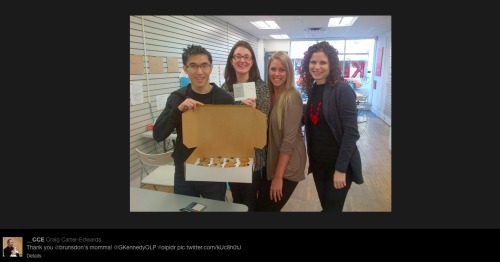
I would have to agree with this. After all, understanding is the place where diversity meets and innovation develops; understanding, of course, is a cognitive function.
WAKATA isn't just a concept - it's intended to be a solution.
By Sarah Miller Caldicott
(John Wiley, 284 pages, $25.95)
It was common for the scientists hired by Thomas Edison for his innovation factory in Menlo Park, N.J., to toil into the late evening or early morning hours, their boss alongside them. He often ordered a midnight lunch of meat, bread, cheese and beverages for the entire crew, to fuel their overnight discussions and theorizing. Gathered together over food they were – take your pick – innovating, collaborating, or both.
Innovation is a hot item these days. Mr. Edison’s great-grandniece, Sarah Miller Caldicott, found that in the first five months of 2012, 250 books were published with the word innovation in the title. But she wonders if in seeking the Holy Grail of innovation, companies (and authors) are actually looking in the wrong direction.
After studying her famous relative, she believes the secret to success is in the collaboration that those midnight lunches reflected. “Perhaps it is a culture of collaboration that we should be seeking as the Holy Grail,” she writes in Midnight Lunch.
Obviously, one doesn’t preclude the other; innovation and collaboration can go hand in hand. The problem is that most people think of innovation as solitary, stunning breakthroughs that emerge through the power of a singular mind, a Newton lying under the apple tree, Archimedes in his bathtub, or Mr. Edison in his laboratory. But Ms. Caldicott reminds us that the inventor of the light bulb, the phonograph and the motion picture camera (among many other devices), was not a solitary creator.
“He viewed collaboration as the beating heart of his laboratories, a sustained resource that fuelled the knowledge assets of his sprawling innovation empire,” she writes. “From his earliest days renting space in workshops and small laboratories, Edison collaborated with others. Realizing the value of sharing his inspiration with people who held different skills than he did, Edison felt a unique bond with those who laboured with him.”
She stresses that the modern fascination with teams does not necessarily mean we are collaborating. Teams too often operate as individuals working alongside but separate from each other. Collaboration involves interweaving a group of people’s work so the talents of everyone are leveraged for a significantly greater gain.
Ms. Caldicott pieces together four phases of collaboration, each containing two elements, so eight factors in all to consider:
Phase 1: Capacity
It starts by creating the foundations for collaboration to thrive. For Mr. Edison, the first element was creating a “collaboration soup,” formulating a diverse group that represented a cross-section of experience, thought styles and creative potential. He relished, and sought, diversity. “It is not always necessary, perhaps not always desirable, to be a specialist in a subject in order to make suggestions to it which starts useful angles of research,” he noted. “We specialists are likely to get into ruts of our specialties out of which it is difficult to progress.” The second element is to assemble small teams of two to eight people who, through collegiality and the nimble search for discovery, can make a breakthrough in understanding.
Phase 2: Context
The team must then focus on developing a new context to frame the problem. That happens through a combination of individual learning plus hands-on collaborative working, which Ms. Caldicott dubs “solo meld” and “group meld.” First, the individual team members pursue their own learning process, questioning their assumptions, reading widely, and considering analogies that might broaden their thinking about the issue at hand. “Individuals prepare insights without locking down on any specific idea or direction,” she says. Then they come together as a group, discussing their insights developed in that solo meld, and pushing each other to new ideas, through methods that include experimenting with prototypes and developing stories to explain possible solutions.
Phase 3: Coherence
The team needs a central, binding force to integrate the collaborators. “Like a kind of gravity that permeates the entire group, coherence connects team members with an invisible grasp that allows the team to keep functioning even if there are disruptions,” she observes. That collaborative momentum comes as the members emerge at various points to inspire each other to move ahead and, secondly, through communication of the progress they are making toward their collective goal.
Phase 4: Complexity
In complex projects, teams must jettison the hierarchical mentality and organize in more fluid patterns that allow them to adapt to shifting conditions – what she calls “smart layers” that can connect the actors in different ways. Keep procedures, structures and other entanglements to a minimum. Document what the group is doing so you can track what has been accomplished (Mr. Edison constantly wrote about his ideas and progress in notebooks).
Midnight Lunch comes at innovation from a useful, different perspective. It’s not always easy reading, and readers can get lost in the details of the eight elements of collaboration. But Ms. Caldicott provides a nice blend of storytelling about Mr. Edison and other creative thinkers that can add to your knowledge about collaborative innovation.
Special to The Globe and Mail
Harvey Schachter is a Battersea, Ont.-based writer specializing in management issues. He writes Monday Morning Manager and management book reviews for the print edition of Report on Business and an online work-life column Balance. E-mail Harvey Schachter

No comments:
Post a Comment